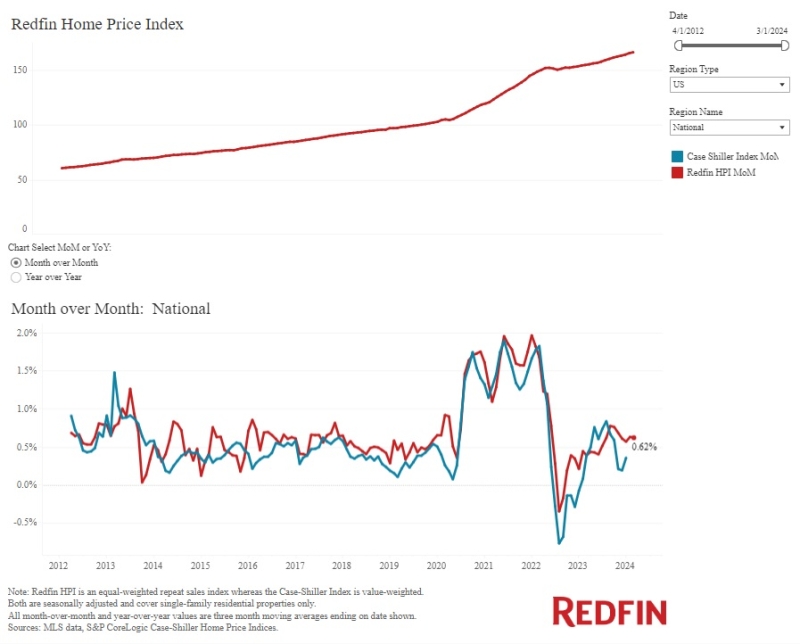Advertisement
MBA study looks at risk management practices that contributed to housing crisis

Multiple factors, including poor data, incomplete performance metrics, and, short-term focus and unrealistic optimism among senior business managers contributed to the collapse in the U.S. housing and mortgage markets, according to a study released by the Mortgage Bankers Association (MBA). The study, "Anatomy of Risk Management Practices in the Mortgage Industry," which was conducted by Professor Cliff Rossi of the University of Maryland and sponsored by MBA's Research Institute for Housing America (RIHA), analyzes the risk management processes employed by mortgage lenders leading up to the housing crisis and discusses lessons learned for future risk managers.
"As home prices increased, lenders were pressured to offer innovative products that could help borrowers afford a home. The resulting increase and expansion of risk layering and change in borrower behavior, left risk managers unable to offer reliable risk estimates," said Professor Rossi. "According to some empirical analysis, when market conditions changed, mortgage performance models proved unstable, with loans originated in 2006 defaulting at four times the rate of what a model prior to 2004 would have predicted. Moving forward, it will be essential for the industry to develop early warning measures of the level of risk in new originations and less reliance on imprecise historical performance of new loan products. In addition to the limits in information available to risk managers, corporate culture and cognitive biases also strongly influenced decision-making during the boom. Of particular influence, was the decline in senior business management's loss aversion due to the lengthy period of strong home prices and low defaults, which led to relaxed underwriting and high levels of risk layering."
Professor Rossi is the Tyser Teaching Fellow and managing director of the Center for Financial Policy at the University of Maryland. In addition to his academic credentials, he has more than 20 years of experience within the industry and at the regulatory agencies.
Michael Fratantoni, MBA's Vice President of Research and Economics added, "Today's mortgage industry is operating under vastly different guidelines than just a few years ago and the survivors in the industry today are clearly the companies that did things right. However, it is imperative that we look back and examine the factors that led to the problems that fed the financial crisis. There are a range of views regarding the causes of the crisis. We asked Professor Rossi, given his extensive academic and industry experience, to offer us his views on what happened, and what the industry can do going forward to prevent such misjudgments in the future. There is room for debate on how best to proceed, but certainly building a stronger risk management framework around the mortgage industry will be critical."
Key findings from the study include:
►Sub-prime loan underwriting criteria along several risk attributes expanded between 1999 and 2006. In particular, combined LTVs increased over time as the percentage of loans with silent 2nd liens attached to the property also increased. At the same time, the percentage of loans with full documentation declined. The resulting increase in risk layering created a gap in understanding the long-term risk profile of these new product combinations and greatly altered the standard products.
►The relative lack of geographic and product diversification by a number of the largest mortgage lenders was rationalized by investment opportunity costs and relative value. For risk managers, building a strong empirical case for concentration risk limits was challenged by limited and changing information.
►A false sense of security with new products originated prior to 2007 occurred as a result of better than average economic conditions coupled with a lack of information regarding subtle but real changes in borrower and counterparty behavior. Models using such macroeconomic conditions as key inputs to explain mortgage default and prepayment were biased toward lower loss estimates as a result.
►Cognitive bias toward risk management may have combined with management views on loss-taking to view risk managers as overly conservative and inefficient, which would explain senior management's actions that ultimately placed their firms at risk. Limiting both the size and stature of the risk management organization would have made sense to senior management based on a lower aversion to losses. Facilitating such views among business managers about risk management are differences in the type of information used and analyzed by both groups. Where business managers could point to tangible, immediate losses in revenues from tighter standards, risk managers could only appeal to probabilistic risks from estimated loss distributions subject to significant uncertainties.
To obtain a copy of the report, please visit the RIHA Web site at http://www.housingamerica.org
For more information, visit www.mortgagebankers.org.
About the author





